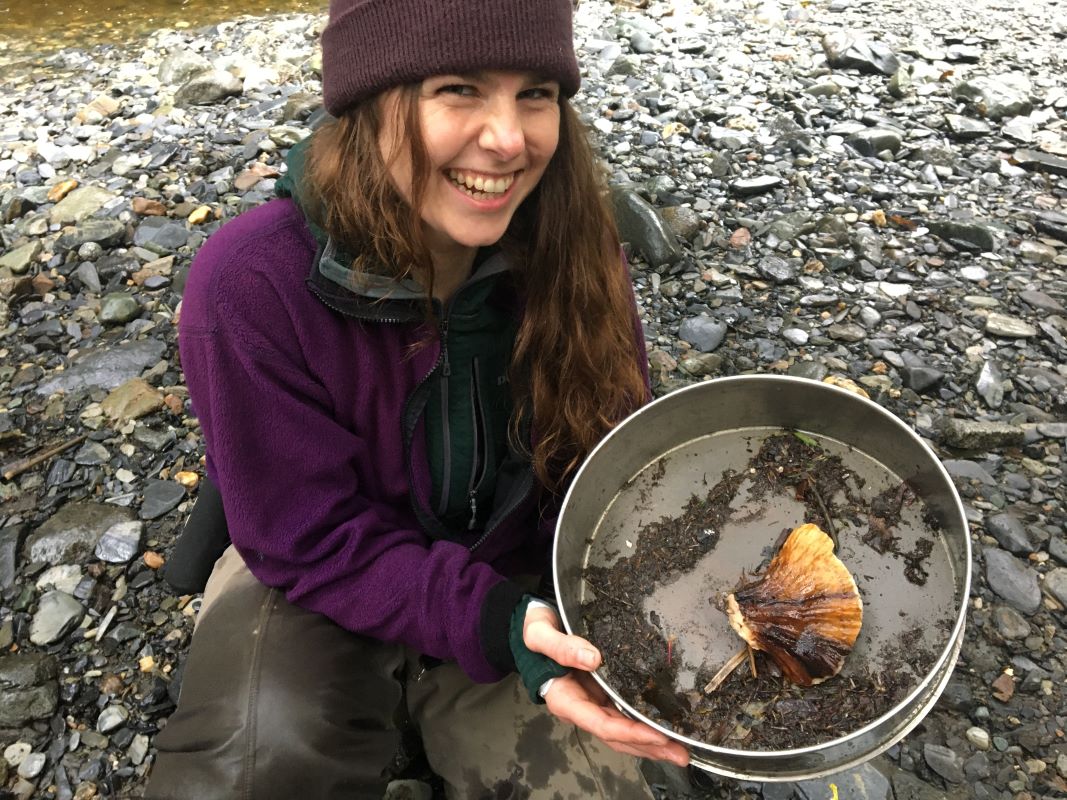Carbon on the Move: Insights from Montana Creek

Peering down from the side of the trail, Kaxdigoowu Héen (Montana Creek) initially appears crystal clear to passing hikers, with swift riffles and smooth pools allowing for glimpses of sandy gravel bars and smooth granite stones below the surface. To juvenile salmon, however, the waters are anything but transparent. Pine needles, leaves, and dislodged invertebrates such as mayfly nymphs and rove beetle larvae are suspended throughout the water column, floating downstream in a parade of particulate matter alongside molecular forms of organic and inorganic carbon unable to be seen with the naked eye.
Rivers transport substantial amounts of carbon to the ocean in coastal regions that impact local and global carbon cycles. The impacts vary depending on the form, quantity, and timing of the carbon, from altering water chemistry and oxygen levels to influencing food web dynamics and long-term carbon storage. The balance of these may affect the health and stability of downstream ecosystems.
Former ACRC graduate student Claire Delbecq recently published a study in Biogeochemistry investigating the dynamics of riverine carbon exports from a temperate forested watershed in coastal Southeast Alaska. Her research measured the form, quantity, and timing of carbon exported from Kaxdigoowu Héen. Water and drift samples collected weekly during low-flow periods and multiple times during storm events from late April through October of 2021. She analyzed five different forms of carbon including four different types of organic carbon (dissolved organic carbon, particulate organic carbon, coarse particulate organic carbon, and drifting aquatic invertebrates) and alkalinity. Additionally, she examined the carbon-to-nitrogen ratio (C:N) of each organic carbon sample to assess the potential importance (lower C:N is typically more biologically available) to stream food webs.
The study period captured 70% of Kaxdigoowu Héen’s total annual runoff in 2021, measuring 13,180 kg of exported carbon per square kilometer. Dissolved organic carbon dominated carbon exports (66%) in every month except July, when alkalinity made up the largest portion (53%) of total carbon export. The highest amounts of dissolved organic carbon were exported during high flow events, as these conditions hydrologically connected the river to the surrounding landscape. Dissolved organic carbon was washed out from soils not typically linked to the stream. Conversely, higher alkalinity export in July likely reflected greater input from groundwater flow.
Drifting invertebrate carbon accounted for the smallest portion of carbon export each month, making up less than 1% of the total. While drifting invertebrates and particulate forms of organic carbon represented smaller portions of total carbon export, Delbecq found that these forms of organic matter had a lower C:N ratio. This suggests they may have disproportionate downstream impacts on aquatic food webs in small, forested watersheds.
Delbecq’s research highlights the importance of understanding how rivers transport carbon, particularly in predicting the effects of climate change on coastal ecosystems in Southeast Alaska. Increased rainfall, extended dry periods, and large storms can alter river flow and carbon delivery to the ocean. This study shows that particulate organic carbon is particularly sensitive to these changes, varying substantially under different flow conditions, while dissolved organic carbon remains more stable. Although particulate carbon constitutes a smaller share of total export, its composition makes it more likely to enter aquatic food webs and influence downstream ecosystems.